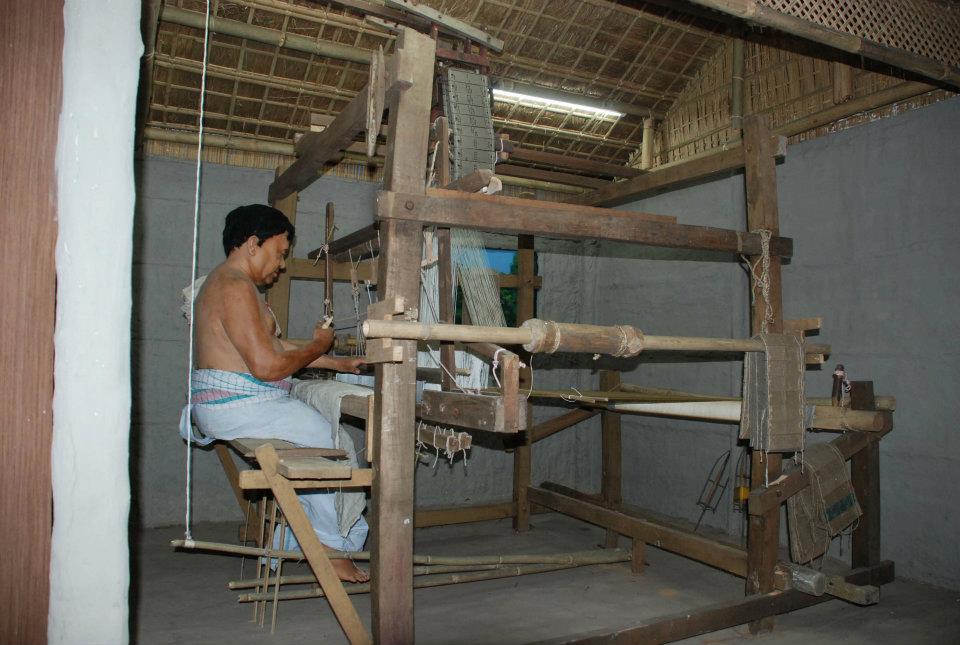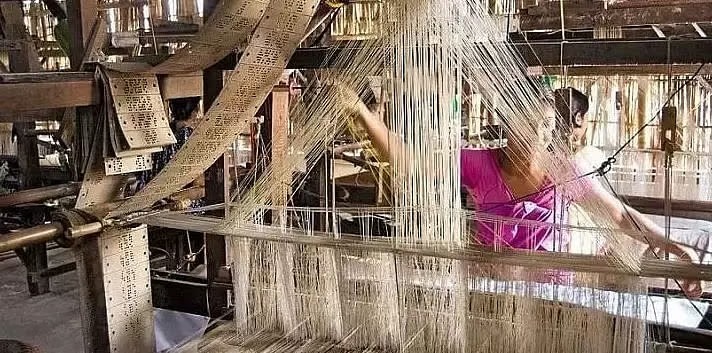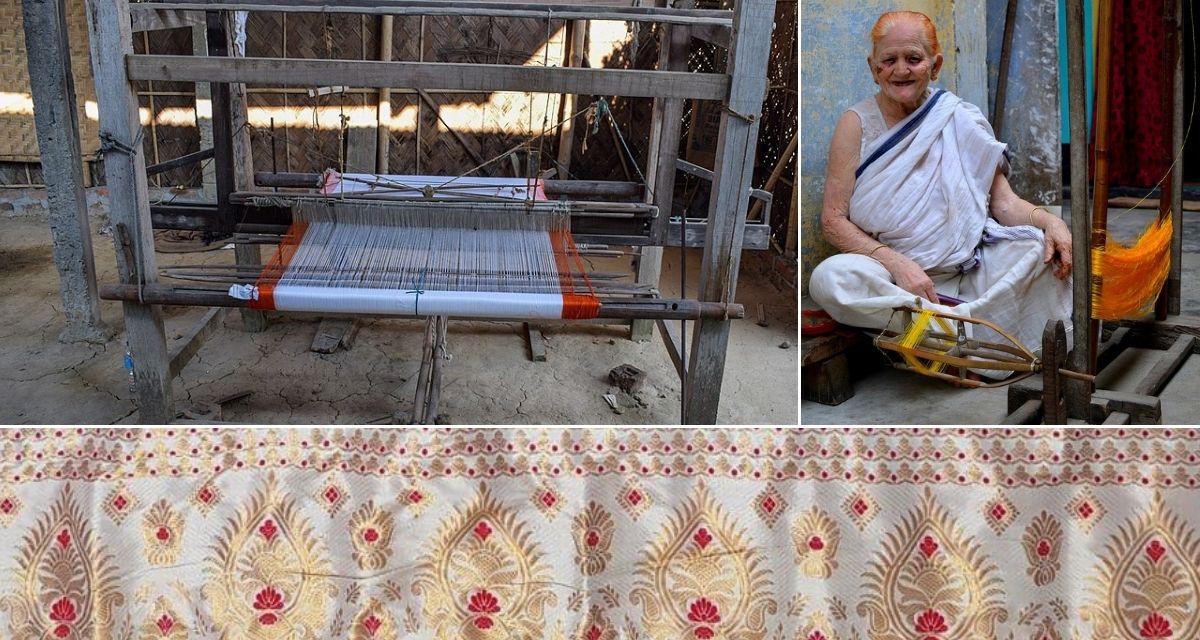Introduction to Sualkuchi – The Manchester of Assam

Sualkuchi, also known as Soalkuchi, is a renowned weaving village in Assam and one of the world’s largest hubs for handloom industries. Due to its vast cottage handloom sector, it has earned the nickname “Manchester of Assam.” Situated in the Kamrup district, about 35 km from Guwahati on the north bank of the Brahmaputra River, Sualkuchi is famous for producing exquisite silk fabrics, particularly the golden Muga silk, which is unique to Assam and not found anywhere else in the world.
The Cultural and Historical Significance of Sualkuchi

The history of silk weaving in Sualkuchi dates back to the 11th century when King Dharma Pal of the Pala dynasty patronized the craft and invited 26 weaving families from Tantikuchi to settle there. The region truly evolved into a major weaving hub during the 17th century after the Ahoms defeated the Mughals and encouraged the craft. By the mid-20th century, silk weaving became the dominant industry, replacing other traditional occupations such as pottery and goldsmithing.
Demographics and Economic Importance
As per the 2001 Indian census, Sualkuchi had a population of 14,129 with an impressive literacy rate of 82%, surpassing the national average. Males and females constitute equal parts of the population, and 6% are children below the age of six. The weaving industry remains the primary source of employment for the majority of residents.
The entire town is engaged in silk production, making it a vital contributor to Assam’s economy. Today, about 73.78% of households in Sualkuchi are involved in commercial weaving, with around 13,752 active commercial handlooms, of which 54.75% are operated by female weavers.
The Unique Silks of Assam
Assam is home to three major varieties of silk:
- Muga Silk – Known as the “golden silk,” it is exclusive to Assam and is renowned for its durability and glossy texture.
- Pat Silk – A fine, white silk that is soft and smooth, commonly used in traditional Assamese attire like Mekhela Chadors.
- Eri Silk – A warm, durable silk often used in the making of shawls and winter clothing.
Sualkuchi serves as the central hub where these silks are woven into beautiful fabrics that are in high demand across India and internationally. The town is particularly known for producing the traditional Assamese Mekhela Chador and Gamosas, which hold deep cultural significance.
Sualkuchi Festival: A Celebration of Weaving and Culture
The Sualkuchi Festival is an annual event celebrating the town’s glorious weaving tradition and the unique heritage of Assamese silk. The festival showcases the skill of local weavers, allowing visitors to witness the intricate process of silk production, from rearing silkworms to spinning and weaving.
Highlights of the Sualkuchi Festival:
- Live Weaving Demonstrations – Visitors can observe expert artisans working on handlooms, crafting exquisite silk fabrics.
- Silk Fashion Shows – Showcasing traditional and contemporary Assamese silk attire.
- Workshops on Handloom Weaving – Educational sessions for visitors to learn about silk production and weaving techniques.
- Exhibitions and Handicraft Stalls – Displaying and selling handcrafted silk garments and other traditional Assamese artifacts.
- Cultural Performances – Traditional Assamese dance, music, and folk performances celebrating the region’s heritage.
- Food Stalls Featuring Assamese Cuisine – Offering local delicacies like Pithas, Laru, and traditional Assamese Thali.
The festival not only promotes the handloom industry but also serves as an important cultural tourism event, drawing visitors from across the country.
The Evolution of the Weaving Industry in Sualkuchi
Initially, silk weaving was a traditional occupation limited to the Tanti community of Tantipara. However, by the 1930s, people from other communities, including Brahmins and fishermen from Koibortapara, also took up the profession. The industry experienced rapid growth during World War II due to increasing demand for fabrics.
The introduction of semi-automatic fly shuttle handlooms in modern times has further expanded production. While the industry was once limited to local artisans, it now includes a significant number of migrant weavers from various parts of Assam who contribute to the thriving silk economy.
Gandhiji’s Visit and Recognition of Sualkuchi’s Craftsmanship
Mahatma Gandhi visited Sualkuchi on January 9, 1946, and was deeply impressed by the craftsmanship of Assamese weavers. He attended an exhibition showcasing Eri and Khadi clothes and was astonished to see an expert weaver create his portrait on a piece of cloth using a handloom. His appreciation further cemented Sualkuchi’s reputation as a center of excellence in weaving.
The Textile Park Initiative
To promote economic growth and modernize the silk industry, the Assam government established a Textile Park in Sualkuchi. Inaugurated by former Chief Minister Tarun Gogoi, the park was constructed by the Guwahati Metropolitan Development Authority (GMDA) at a cost of Rs. 1.93 crore. The initiative aims to:
- Provide a structured market for handloom products.
- Support artisans with advanced facilities and training programs.
- Attract tourism and investment in the handloom sector.
Challenges and the Future of Sualkuchi’s Weaving Industry
Despite its rich legacy, Sualkuchi faces several challenges:
- Competition from Machine-Made Fabrics – The influx of cheaper, machine-made textiles threatens traditional handloom weaving.
- Shortage of Skilled Weavers – Younger generations are moving to other professions, leading to a decline in skilled artisans.
- High Production Costs – The cost of raw materials, especially silk yarn, has risen, making traditional weaving less profitable.
- Need for Market Expansion – While Assamese silk has a niche market, more efforts are needed to boost national and international sales.
To sustain and grow the industry, government initiatives, skill development programs, and digital marketing strategies must be employed to reach a global audience.
Conclusion
Sualkuchi is not just a weaving village; it is a living testament to Assam’s rich cultural heritage and craftsmanship. The Sualkuchi Festival plays a crucial role in preserving and promoting this legacy. While modernization and challenges persist, the dedication of the weavers and support from government and cultural bodies can ensure that Sualkuchi continues to shine as the Silk Capital of Assam. With its deep-rooted traditions, stunning silk textiles, and commitment to excellence, Sualkuchi remains a jewel in India’s handloom industry.
FAQ’s
Q. Where is Sualkuchi located?
Sualkuchi is a town in the Kamrup district of Assam, India, situated on the north bank of the Brahmaputra River, approximately 35 km from Guwahati.
Q. Why is Sualkuchi called the ‘Manchester of Assam’?
Sualkuchi is referred to as the “Manchester of Assam” due to its thriving handloom industry, where nearly the entire population is engaged in silk weaving.
Q. What products are made from Assamese silk in Sualkuchi?
The town is famous for Mekhela Chadors, Gamosas, Sarees, Shawls, and various silk garments woven from Muga, Pat, and Eri silk.
Q. When is the Sualkuchi Festival held?
The festival is usually held once a year, though the specific dates may vary. It is best to check local announcements for the exact schedule.
Q. Can tourists visit Sualkuchi year-round?
Yes, Sualkuchi is open to visitors throughout the year. However, visiting during the festival offers a more immersive experience of Assamese silk culture.




